100th Anniversary Great Nave Tour at the Cathedral of St. John the Divine
Celebrate the 1925 construction of the stunning nave inside the world's largest Gothic cathedral!



New York City is a cultural hub of people of different nationalities, races, religions, sexual orientations. It is home to people from all over the world and as such, holds history and iconic buildings inspired by multiple cultures and religions. Some of New York City’s most iconic and historically significant buildings are the massive churches and cathedrals that call the city home.
Discover the secrets and hidden gems of ten of New York City’s most prominent cathedrals, churches, and chapels.
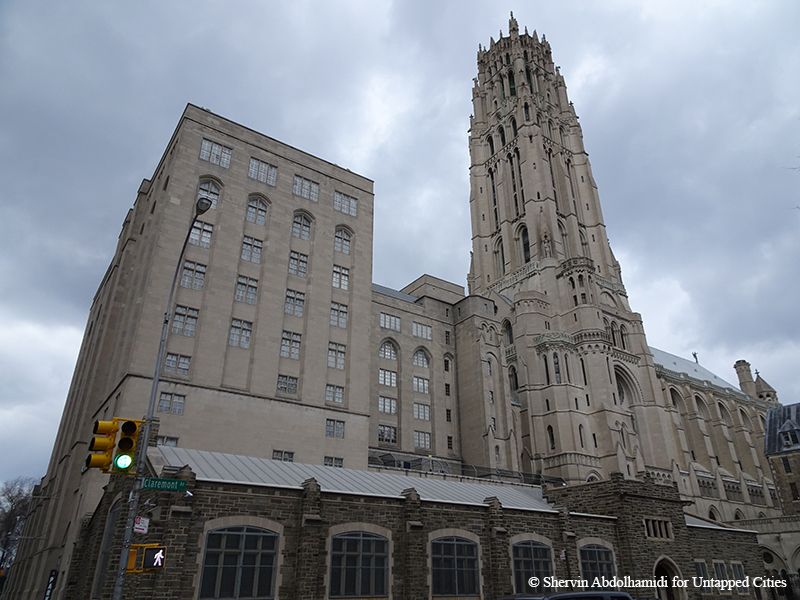
Riverside Church, the tallest church in the United States, was built by John D. Rockefeller. It opened in 1930 at 490 Riverside Drive in Morningside Heights and stands 392 feet tall. The church is interdenominational and serves as a religious sanctuary for multiple ethnic groups, and the LGBTQ community and has taken part in multiple social rights causes. The modernity of Riverside Church has been present since its inception and houses the statues of scientists and previously had four bowling alleys in the basement of the church that drew in many college students from Columbia University.
For the design, the architects were inspired the French cathedral at Chartes and drew inspiration from the Gothic structure’s bell tower. Additionally, the stained glass windows in the church were originally installed in a 16th Century Belgium cathedral.
Riverside Church was also the site of Martin Luther King Jr.’s “Beyond Vietnam” speech that protested the Vietnam War. This speech wasn’t one of his more effective and well-known speeches, but despite a lot of opposition, he stood strong in his belief that the war was detrimental to the American people.
Check out the Top 10 Secrets of Riverside Church.
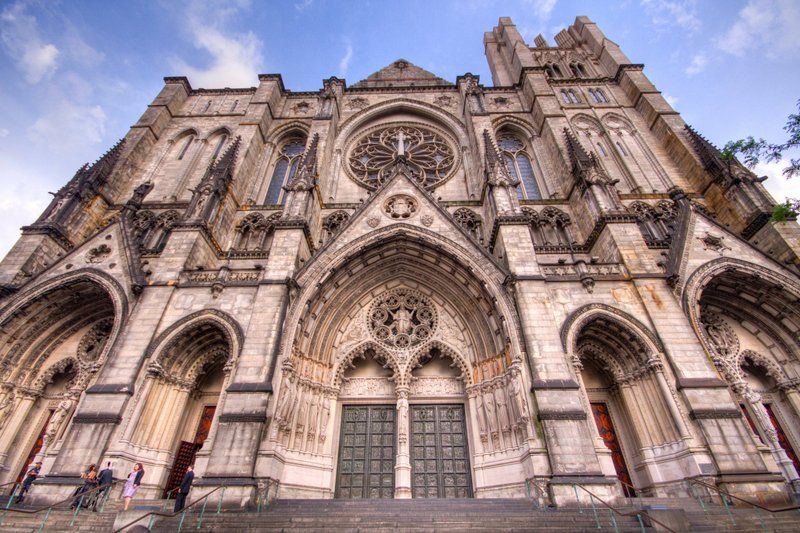
Image via Wikimedia Commons by Kripaks
The Cathedral of St. John the Divine was built in 1892 on 1047 Amsterdam Avenue in Morningside Heights in Gothic Revival and Romanesque Revival styles. The cathedral was never finished because it was meant to be built using true Gothic style methods and would have taken several hundred years to complete. In 2001, a fire broke out and destroyed the cathedral’s gift shop which caused a tremendous amount of smoke damage to several areas. The restoration was completed in 2008 and the cathedral was fully opened once again.
The Newberry Prize winner, Madeleine L’Engle, who wrote A Wrinkle in Time, volunteered at St. John the Divine and was buried in the Cathedral in 2007. The cathedral is also home to the largest rose window in the United States and features many modern images like television alongside traditional church imagery in the stained glass windows.
The Cathedral of St. John the Divine is also home to a triptych by Keith Haring, a trio of peacocks and twelve tapestries (recently restored) that were designed by baroque master Giovanni Francesco Romanelli, and woven for Francesco Barberini, who was the nephew of Pope Urban VII.
You can also take a vertical tour of the cathedral to get to the upper reaches of the interior and landings, and a rarely seen lower level is home to artist studios. One of the most famous artist in residences is Philip Petit, who tightroped between the original World Trade Center towers.
Check out the Top 10 Secrets of the Cathedral of St. John the Divine.
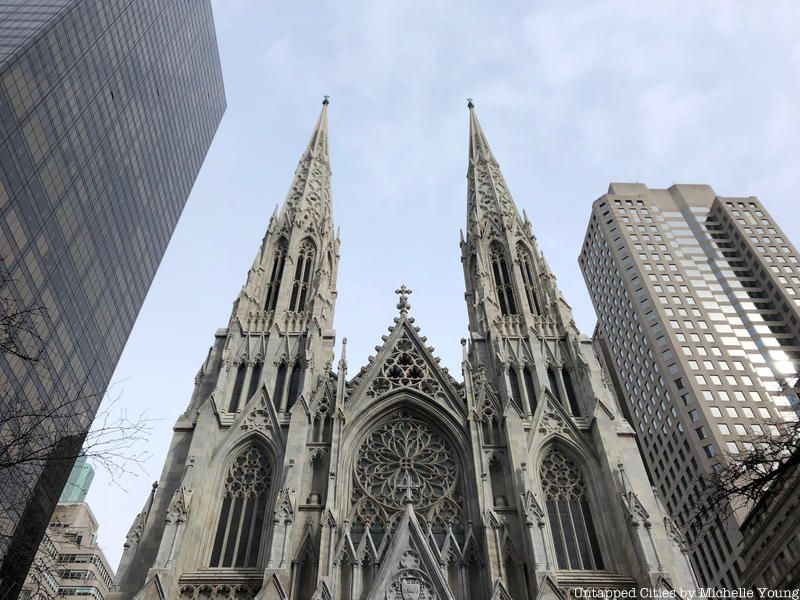
Located on 5th Avenue, The Cathedral of St. Patrick, also known as “America’s “Parish Church,” was designed by James Renwick Jr. and opened in 1878. Despite construction being underway in 1858, the Civil War delayed the building and opening of the cathedral. The Cathedral of St. Patrick features Gothic Revival and English Gothic styles.
In addition to a missing cornerstone, the cathedral is home to two sets of windows that very few people have seen due to their position behind the organ that’s not visible from any of the pews. They can only be accessed via a hidden staircase which is ridden with graffiti names and a depiction of the Twin Towers. Similar to Riverside Church, the stained glass in the cathedral come from all over France, with many created in Chartres.
Guests are encouraged to look around the cathedral to spot the numerous animals hiding in sculptures and painting throughout the building. Despite being a popular and common location for weddings, the Cathedral of St. Patrick has documentation of every wedding that has been held on its grounds and held the wedding of F. Scott Fitzgerald, the author of The Great Gatsby and Selda Sayre in 1920.
Check out the Top 10 Secrets of St. Patrick’s Cathedral.
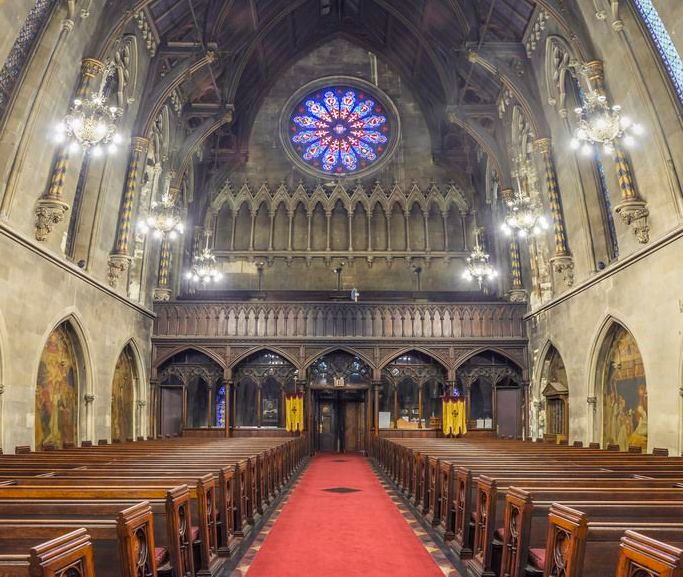
Photograph by Richard Silver
The Serbian Orthodox Cathedral of St. Sava was built in 1850 on 20 West 26th Street with the Gothic Revival style and was almost completely destroyed in a fire last year. The church was originally established as the Trinity Chapel complex was designed by Richard Upton. In 1865, for the very first time in America, the Episcopal church held an Orthodox liturgy which was an unheard of event at the time.
The chapel also held the wedding of Edith Wharton, the Pulitzer Prize-winning novelist and inspired aspects of her novel, The Age of Innocence. Trinity Chapel actively held services and served the community for over fifty years until it was sold in 1942 when the are became commercialized and most of its parishioners opted to move north.
The Cathedral of St. Sava was bought for thirty-thousand dollars by the Serbian Orthodox Diocese. Beyond the religious components of the cathedral, it takes part in cultural and education opportunities that aim to preserve Serbian culture, language, and traditions. After World War II, the church helped refugees and immigrants from Yugoslavia. In 1968, the cathedral was given national landmark status by the New York City Landmarks and Preservation Commission.
Since the fire, the parish has stabilized the remaining walls, at the requirement of the Department of Buildings, and are working with the Landmarks Preservation Commission, city agencies and other organizations for the “proper procedure for renewal of our church,” the cathedral reported in on its website last August. One of the items that did survive the fire is a sculpture of Serbian scientist Nikola Tesla.
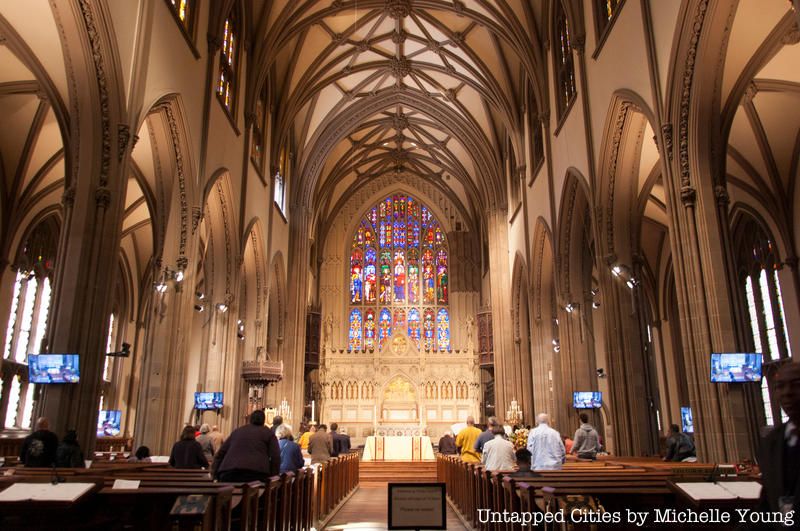
The Gothic Revival styled Trinity Church is located on 75 Broadway, opened in 1846 and reaches 284 feet high. The church was designed by Richard Upjohn and Captain William Kidd helped construct the building by lending his runner and tackle to the builders. Kidd was a Scottish sailor who was executed on May 23, 1701, for murder and five counts of piracy. Not many churches can say they’ve been built by a convicted pirate!
Gone are the days where land can be bought for five cows and a barrel of hay, but the land that Trinity Church was built on was purchased for an annual shipment of sixty bushels of wheat for the king. Despite such a modest payment, the 14 acres of land includes commercial space in Hudson Square which is worth approximately two billion dollars today. Also on the church grounds is the only active cemetery in Manhattan and St. Paul’s Chapel, the oldest standing church in Manhattan.
Next, check out the Top 10 Secrets of Trinity Church.
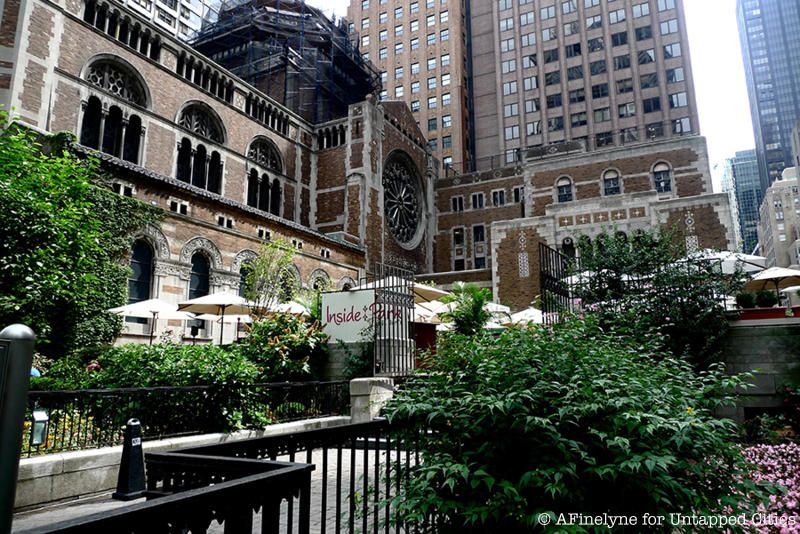
St. Bartholemew’s, also known as St. Bart’s, is located on 325 Park Avenue on the Upper East Side and takes up an entire block. The current building replaced the original church that was located on Madison Avenue but suffered structural issues that eventually caused it to close. The church was designed by Bertram Goodhue in Romanesque and Byzantine Revival styles. In 1967, the church was designated a National Landmark by the New York City Landmark Commission and its preservation continues today.
St. Bartholemew’s is different than most churches in that it offers multiple unique facilities for the community to enjoy. The church’s terrace is home to a popular restaurant called, “Inside Park at St. Bart’s” and a community house that offers meeting spaces for 12-step programs, a preschool, and a fully stocked athletic facility which includes both a pool and a gym.
The church has been deeply involved with music since it was established in its original building and the well-known composer and arranger, Henry Warren directed the choir. St. Bart’s also housed the world renowned conductor, Leopold Stokowski who was brought to New York City by the church to direct the choir.

Located in Brooklyn Heights, this particular Grace Church (not to be confused with the one in Manhattan) was designed by Richard Upjohn, who also designed Trinity Church. Opening for its first service in 1848, the church became increasingly more architecturally distinctive over the years, with decorative paint added as well as having the “original diamond-pane windows replaced with stained glass from studios such as Tiffany, J & R Lamb, Clayton & Bell and Mayer of Munich.”
A vivid blue sky dotted with golden stars adorns the ceiling of Grace Church now and had since the church’s inception in 1866. However, at the turn of the century, a fake wood pattern–”faux bois”– was painted atop the celestial mural. The mural was finally recovered after investigation by historic preservationists in December of 2013, enchanting the church once again.
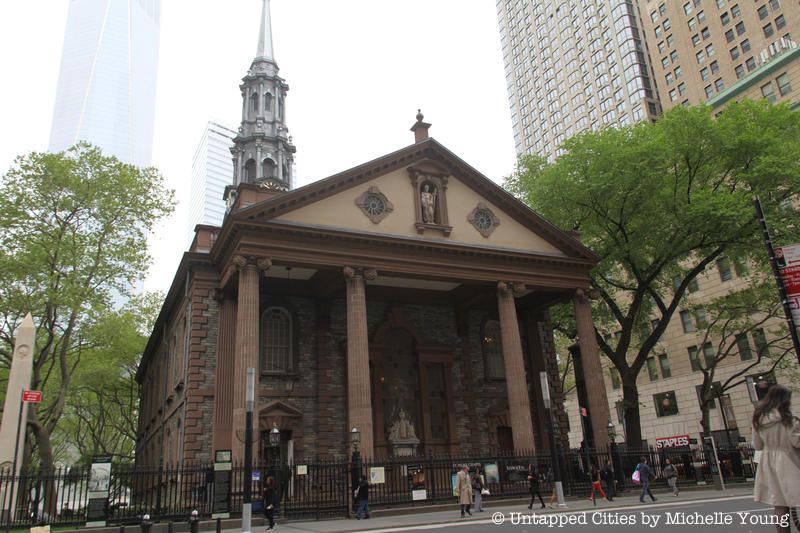
St. Paul’s Chapel, the oldest building in Manhattan, was designed by Thomas McBean and opened in 1766. While designing the building, he used St. Martin in the Fields, a London church designed by James Gibbs, as a template. He was also inspired by the Choragic Monument in Greece.
George Washington went to St. Paul’s before and after he became president and the pew he prayed on during the day of his inauguration still stands in the church. St. Paul’s Chapel is also home to “The Glory,” an alter piece designed by Pierre L’Enfant. Like Trinity Church, St. Paul’s Chapel was an important refuge during 9/11. There is one bench left that remains from 9/11, located in the back room of the chapel, and you can still see the scratches and imprints of relief workers who took rest there.
Learn about these stories are more on our upcoming tour of the 9/11 Memorial area, featured untold stories from the day and the redevelopment of the area:
Untold Stories of 9/11 Walking Tour

St. Jeane Baptiste Catholic Church, located at 184 East 76th Street on the Upper East Side, was designed by Nicholas Serracino. The limestone construction building was completed in 1913, designed with multiple architectural styles in mind including Italian Renaissance Revival, Italian Mannerism, and Neo-Classic Revival.
The Catholic church in New York City grew from French-Catholics who wanted to begin their own congregation and the stained glass featured in the church was brought with them from Chartres, France and the church’s altar is from Italy. St. Jeane was built during a time when Catholic churches were attempting to find their own architectural style that differed from the Gothic choices of Protestant churches.
The church has moved twice since its original building. The current Nicholas Serracino building was paid for by Thomas Fortune Ryan after he arrived for church late one day, was shamed by having to stand during the entire service, after which he offered to pay for the new building.
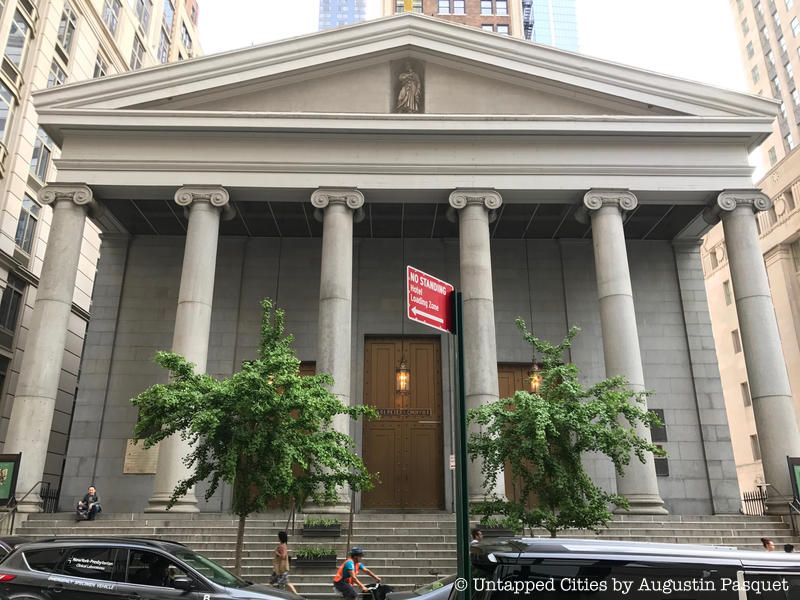
The first Roman Catholic parish in New York City was St. Peter’s Church. It was built in 1785 a few years after the American Revolution and was established several years prior to the current American government.
The history of the Catholic church in America is not without its share of bloodshed and on Christmas Eve in 1806, a riot broke out outside of St. Peter’s Church. Fifty protestors gathered outside of the building. The following day, on Christmas, the Irish Catholics feared an attack and armed themselves, which resulted in a watchman getting killed and a riot breaking out. The only people arrested were the Irish immigrants.
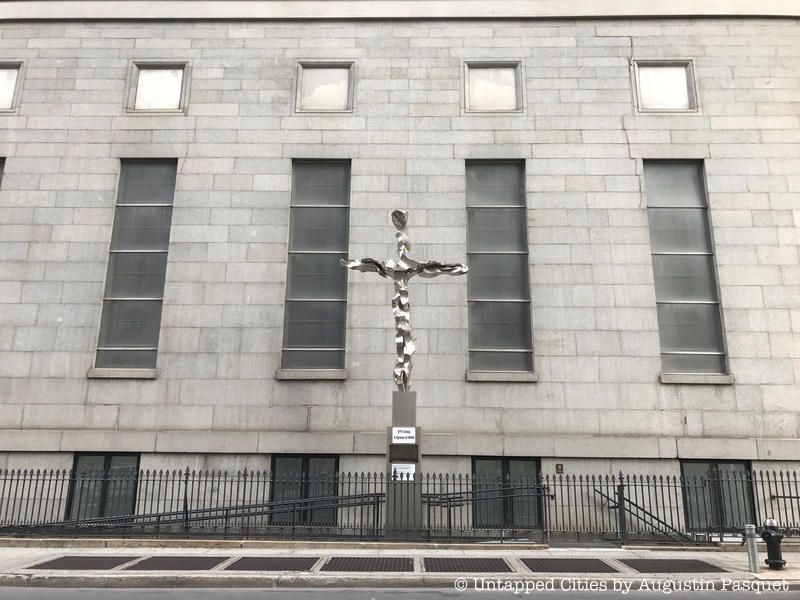
In 1836, the original ceiling began falling apart and the congregation grew too large to contain all of the people who came to worship. A new church was built in 1840 and the location of the new church, which is still standing today on Barclay Street near the World Trade Center, remained the same as the original. The famous “Ground Zero cross” from the steel at 9/11 was originally located at the side facade of St. Peter’s Church before it moved into the 9/11 Museum, but has been replaced by a metal cross sculpture Jon Krawczyk, commissioned for the location.
The cathedrals, chapels, and churches of New York City provide a rich history and cultural background of the city during the times they were built. Due to their age and iconic architecture, they are deeply rooted in the lives of historical and famous figures and are home to many historical artifacts and quirky secrets. The buildings have long since taken on a life of their own.
Next, check out 10 Secrets of St. John the Divine in NYC and Top 10 Secrets of Trinity Church in NYC
Get in touch with the author at LitByLiterature.
Subscribe to our newsletter